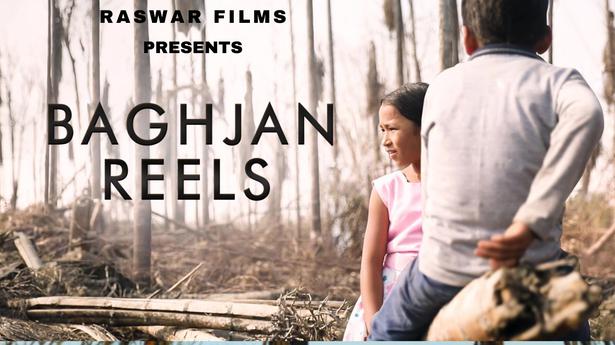
The untold stories of devastation in Baghjan Reels
The Hindu
A documentary depicts the Moran community’s struggle to rebuild lives from the ashes of the longest oil field fire in Assam’s Baghjan village, which occurred two years ago
Tahin Ojah Sharma, a 42-year-old FTII-trained filmmaker living in Mumbai for two decades, became curious when news about India’s longest oil well fire in her home State, Assam, started fading away from mainstream media even before it caught the country’s attention.
A gas leak in Baghjan oil field in Tinsukia district in upper Assam first made headlines on May 27, 2020. Within a fortnight, fire broke out following an explosion in one of the oil wells on June 9. It took more than five months to kill the blowout and extinguish the fire on November 15. All along, Tahin kept herself abreast with every news report and google update and was surprised to see how videos of the Vishakhapatnam gas leak that happened 20 days earlier went viral, but Baghjan failed to create a stir.
The incident happened when everyone was reeling under the fear of COVID uncertainties ahead, says Tahin. As a result of the second COVID wave, she could not visit the site till about a few months ago. “I was getting restless about lack of inputs on the environmental degradation following the fire and how it had impacted the local population, flora and fauna,” she says.
Hailing from the region, it was not difficult for Tahin to visualise the circumstances of the affected Moran community — the early inhabitants of Baghjan — and how the fire consumed their homes, livestock and livelihoods.
True to her fears, when she drove into Baghjan village last winter for the first time after the fire, she was numbed by the large-scale destruction. “The once green and fertile land of betel and tea plantations, banana orchards and bamboo groves was now a deserted wasteland. It was a haunting visual with ash-laden burnt trees and brick houses all around; dead fish and carcass of domestic animals and pets floating on smelly oil-coated water,” she recalls.
Farming, animal rearing and fishing were the primary occupation of the people here, and Tahin set out in search of them. “Everybody had fled. I found only 15 members from three families, who had returned to their burnt homes and started living in temporary shelters made of tin,” she says and adds that it is their voices she wants the people to hear. That is how the documentary took birth.
The serious health risk from lingering toxic fumes, oil spill and all-pervasive contaminants are issues ignored by the authorities as the residents who have returned have no choice but to cope with the aftermath. Tahin’s 34-minute documentary is soul-stirring as you hear helpless locals narrate their trauma.













